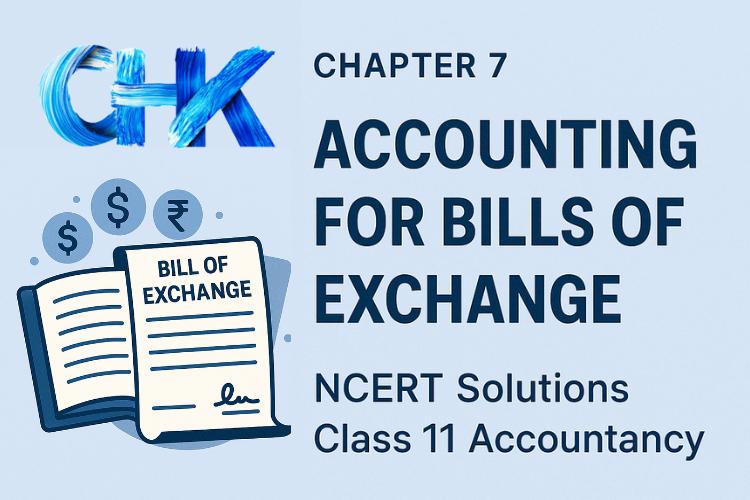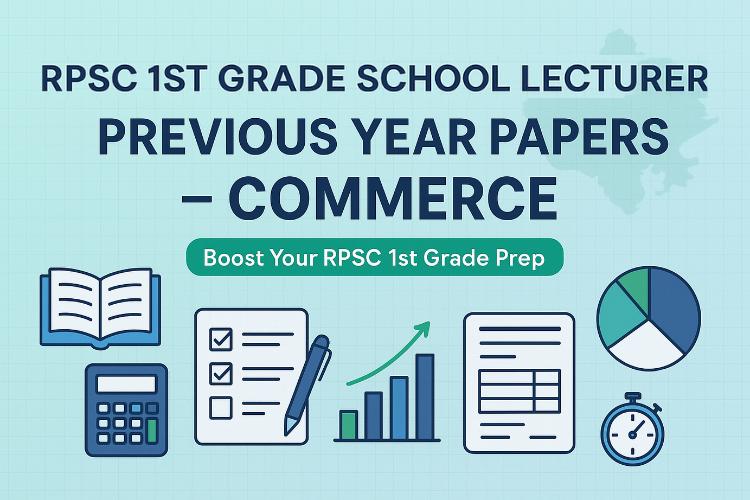
Chapter 7 Accounting for Bills of Exchange NCERT Solutions | CBSE Class 11 Accountancy
Chapter 7 Accounting for Bills of Exchange NCERT Solutions: A great resource for studying for the CBSE Class 11 Accountancy exams is NCERT Solutions. The NCERT solutions are helpful for quickly understanding the topics. This chapter forms the foundation of many advanced accounting topics you’ll study in higher classes.
Key Concepts Covered
- Meaning and features of bills of exchange
- Types of bills: trade bills and accommodation bills
- Parties involved: Drawer, Drawee, Payee
- Promissory Notes vs. Bills of Exchange
- Dishonour of bill and noting charges
- Endorsement and discounting of bills
- Renewal and retirement of bills
This chapter not only helps students understand credit transactions in real business scenarios but also improves their journal entry and ledger posting skills.
Why NCERT Solutions Are Important?
- Prepared by subject experts as per the latest CBSE syllabus.
- Helps students develop a conceptual understanding.
- Improves accuracy and presentation skills for exams.
- Provides step-by-step solutions for all textbook questions.
- Boosts confidence in tackling board exam-style questions.
Download Chapter 7 Accounting for Bills of Exchange NCERT Solutions PDF Free
You can now download the complete NCERT solution PDF for Chapter 7 – Accounting for Bills of Exchange for FREE. It includes all In-text Questions, exercises at the End of the Chapter, numerical Problems with Working Notes, practice Questions for Self-Assessment.

Click Here To Download Chapter 7 Accounting for Bills of Exchange NCERT Solutions PDF
Pro Tips for Students
- Practice journal entries multiple times to gain accuracy.
- Understand the timeline of a bill (date of issue, maturity, dishonour).
- Don’t just memorize; relate the concept to real-life examples.
- Use the NCERT solution as a guide, not a crutch—always try the questions yourself first.
Also Download – CBSE Class 11 Accountancy Chapter 6 Depreciation Provisions and Reserves NCERT Solutions
Conclusion
Understanding Bills of Exchange Accounting is critical for successfully managing credit transactions in business. With our free NCERT solution PDF, you will be able to confidently answer every exam question. Whether you’re studying for school or pursuing CA/CMA/CSEET foundations, learning this chapter will offer you a competitive advantage in the accounting field.
FAQs
Q1. What is a Bill of Exchange in Class 11 Accountancy?
A Bill of Exchange is a written, unconditional order by one party to another to pay a fixed amount of money on demand or at a set date.
Q2. Why is Chapter 7 important in Class 11 Accountancy?
Chapter 7 introduces the concept of credit transactions and negotiable instruments, essential for understanding real-world business accounting.
Q3. What topics are covered in Chapter 7 NCERT Solutions?
The chapter includes topics like promissory notes, dishonour of bills, renewal, retiring of bills, and journal entries for all.
Q4. Are these NCERT solutions based on the latest CBSE syllabus?
Yes, the solutions are prepared strictly according to the latest CBSE syllabus and NCERT guidelines for Class 11.
Q5. How do NCERT solutions help in exam preparation?
They provide clear explanations, solved examples, and accurate journal entries, which help students score better in exams.
for more information contact us –
Ph. No. – +91-6367885579
WhatsApp – Click to chat
facebook – @commercehubkota
Instagram – @comerc_classes
Youtube – @commercehubkota
Telegram – @comerc.in









